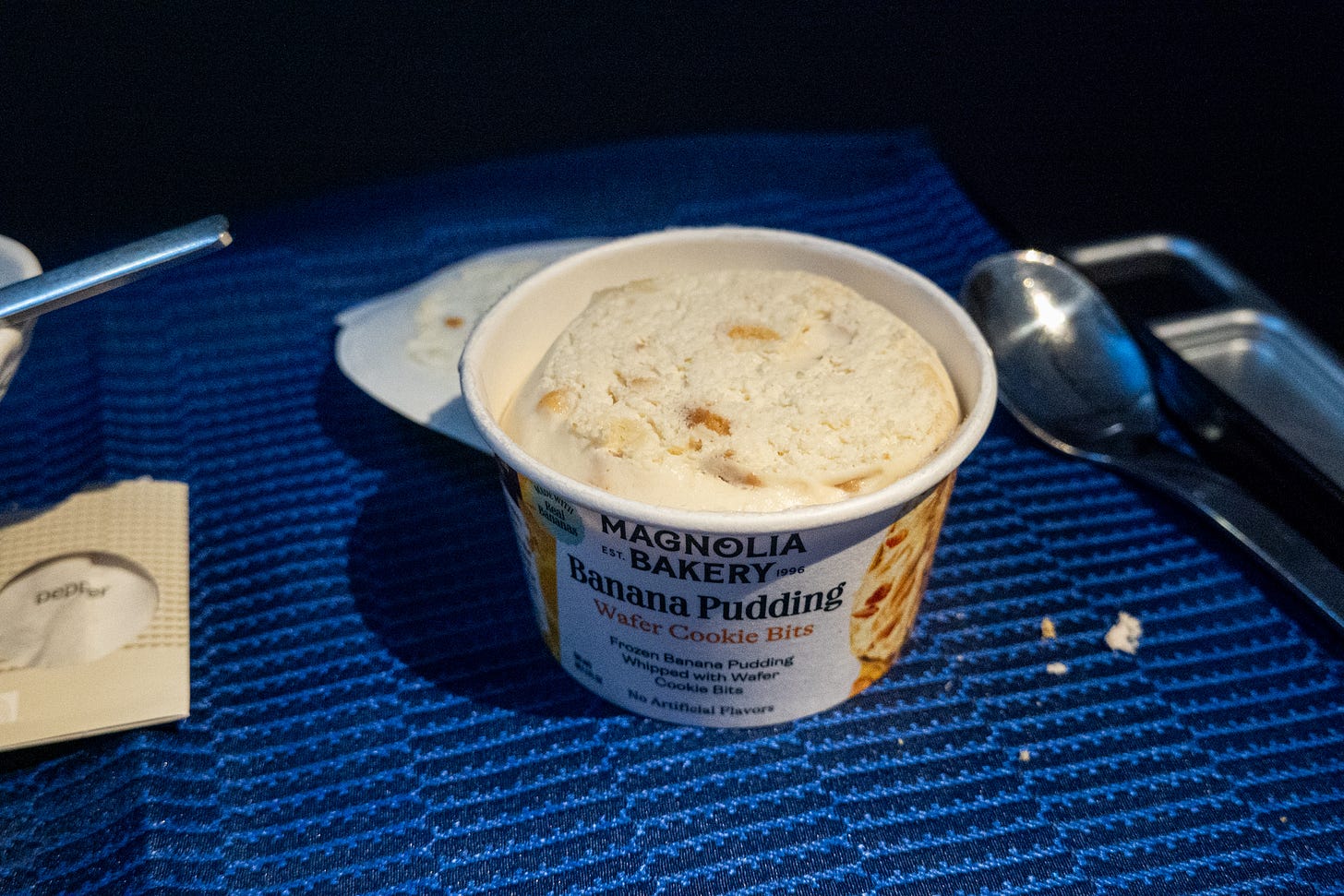A few weeks ago, I went on my first work trip since returning from my break this fall. It was for a Shake Shack cheeseburger.
Delta made headlines in late-fall when it announced that it was partnering with Shake Shack to offer the fast casual chain’s burgers as a meal option in the domestic first class cabin. To start, the burger will be available in first class on domestic flights over 900 miles departing from Boston, although the airline says it will roll out the partnership to more of its hubs by the end of this year.
Being Boston based, and having experience on the beef-in-the-sky beat (which I insist is a real thing), the assignment fell to me.
Since I was heading out anyway, we decided that for the flight back, I’d catch a flight on United to try the Magnolia Bakery banana pudding that the airline is serving as dessert in its first class.
The whole thing got me thinking about the idea of serving food from real, tangible restaurants in on airplanes (I wrote a story about that for TPG, which you can read here.)
Read more: We tried Delta's Shake Shack burger in the sky. Does it actually work?
Even in the fanciest of international first class cabins, where you can expect caviar, sushi or the finest steaks, you’ll find yourself holding anything you eat to the standard of “for an airplane.” It was incredible sushi…for an airplane. The steak was really tender…for an airplane. I was really impressed by the quality of the food…for an airplane.
To be clear, this is absolutely not a knock against the people who work in airline catering, from executives to chefs to prep cooks to logistics managers. It’s an incredible challenge to make good food that can stay stable during travel, heat properly in a convection oven on a plane, and taste good at 35,000 feet when your taste buds are very slightly less sensitive due to mild altitude-related hypoxia. Often times, airlines do a stellar job (even if other times, it’s less stellar).
But nonetheless, your standards are going to be different on an airplane.
So it’s actually a bit risky for the airlines and restaurants that partner to offer meals on board, at least in cases where the restaurants are actually familiar to passengers. You’ve been to Shake Shack before, you know what it’s supposed to taste like. It doesn’t benefit either brand to have passengers say “yeah, it was a really good Shake Shack burger, considering it was on an airplane.” It’s quite conspicuous if they get it wrong on the plane, so presumably they’d have to be confident in their ability to replicate the experience from the ground.
In the case of Delta and Shake Shack, the confidence is well-placed. The burger was excellent, just like it would be on the ground. You can read more about it over at TPG.
The banana pudding was similarly tasty, though it’s worth noting that it’s a packaged product that Magnolia is introducing, so it’s certainly less of a challenge than the Shake Shack burger.
I did have one other thought during the Shake Shack taste test: There’s an argument to be made that first class meals should be more along the lines of fine dining, not fast casual. There’s validity there, but this isn’t the 1960s anymore. Service on board has been rolled back over the decades and dining in domestic first hasn’t approached the white-tablecloth level in ages — even if you do still, soemtimes, get a white tray-covered tablecloth.
These days, having food at all is the selling point of the first class service, and having that food be solidly edible, or even good, is the goal. If that “good” comes in the form of fast-casual, I don’t see an issue.
JetBlue, meanwhile, serves dishes designed with hip restaurants in Manhattan in its Mint business class (alongside food from Dig Inn in economy on its transatlantic flights), so there’s clearly opportunity for more upscale and chic collaborations, too.
That’s all for now. As always, I welcome your comments and messages, and would always like to hear what you’d like to read more of. What can I be covering that you want to read about?






